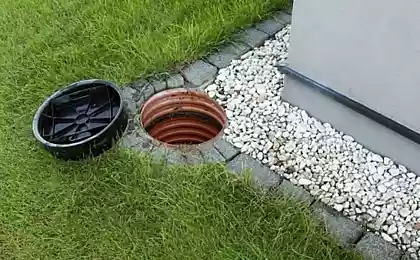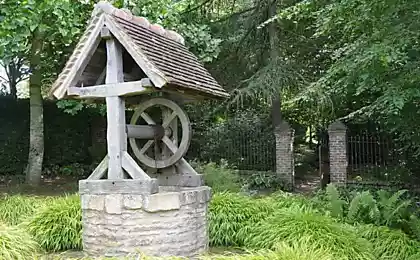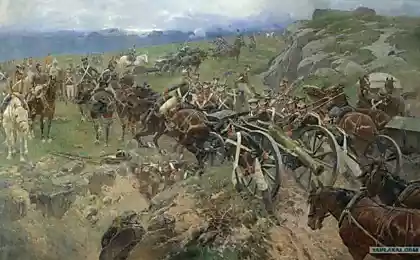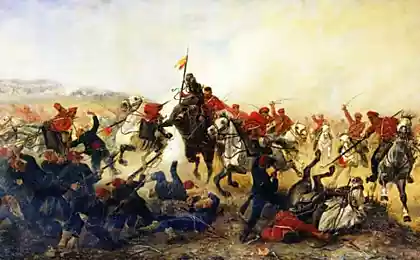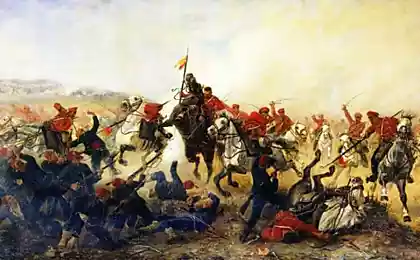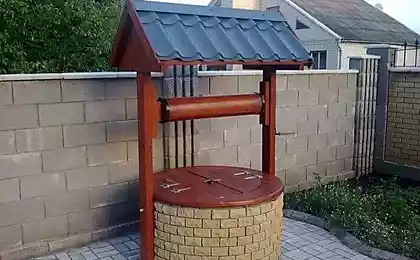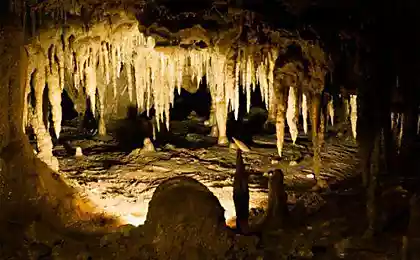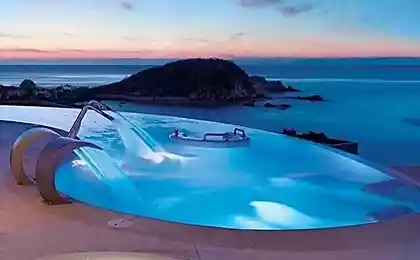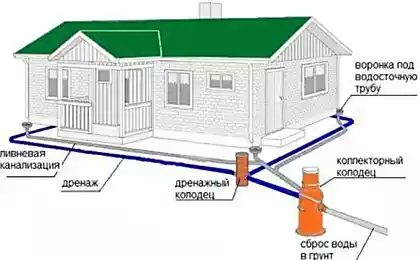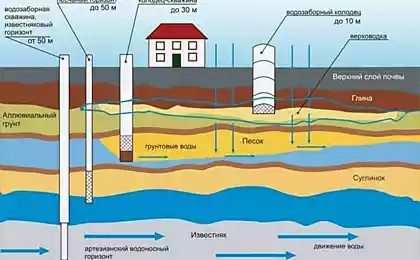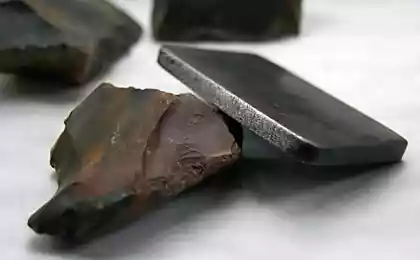800
The kiariz —amazing water system of the Persians in length
When talking about Persia, the first thing that comes to mind is the king of Xerxes who fought the Spartans at Thermopylae gorge during the Greco-Persian wars. Meanwhile I want to draw your attention to the fact that the Persians of that time were a fairly advanced civilization, the legacy of which is still asserting itself.
Look at those weird holes in the ground — what is it? Let's start with the fact that this building is almost 3,000 years and it was built before the war between the Persians and the Greeks, three hundred years of commercials before...
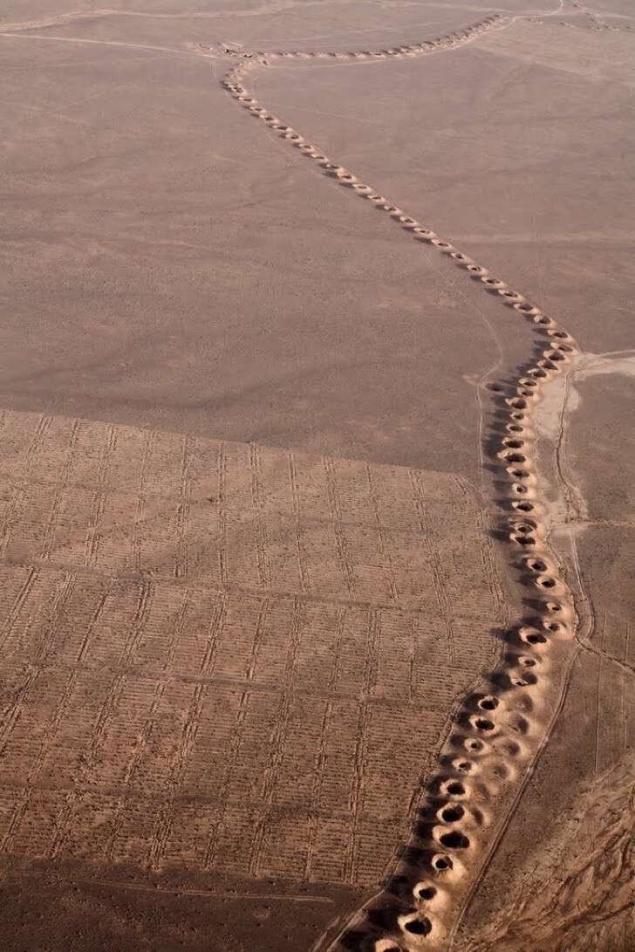
The building is called the kiariz, or minutes away from, and it is located in the city of Gonabad that in modern Iran.
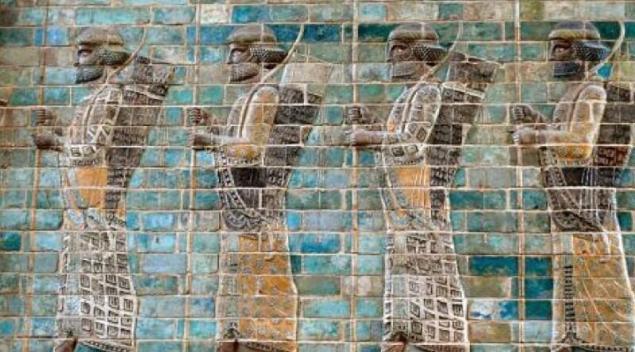
The kiariz is considered one of the greatest inventions of the time! This tap system is able to collect water out of the aquifers and transport it to cities and irrigation canals. Due to this, Persia was able to exist and thrive in the arid climate.
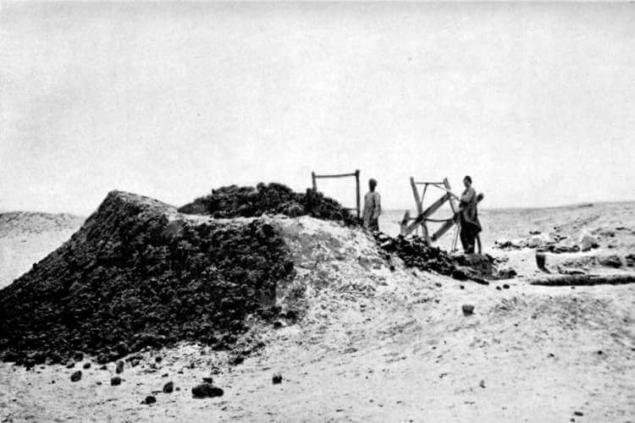
Hydraulic system includes the main pit, which receives water from the underground horizon, a system of tunnels in which water is transported to a certain place, and vertical wells for ventilation along the entire route, thereby condensing moisture. Everything else, underground conduit significantly reduces the evaporation of precious moisture.
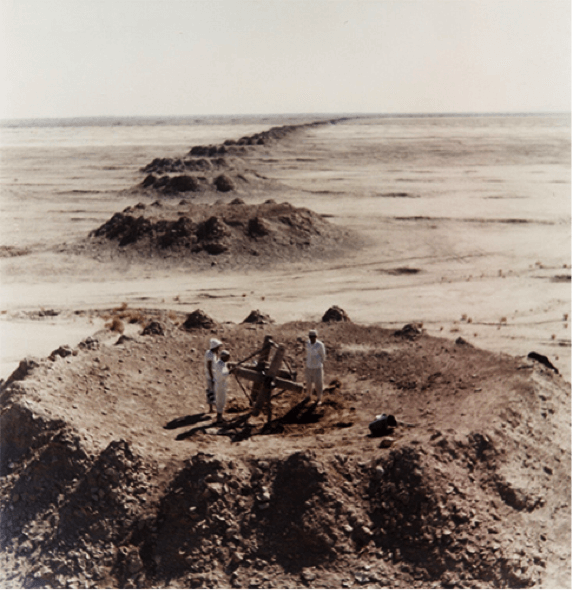
Length generalscope of kiariz is 33,113 meters, it contains 427 recesses for water. Structures are built using the knowledge of the laws of physics, Geology and hydraulics, which confirms the high degree of development of the Persians. Since 2007 gonabadi the kiariz included in the world heritage List of UNESCO.
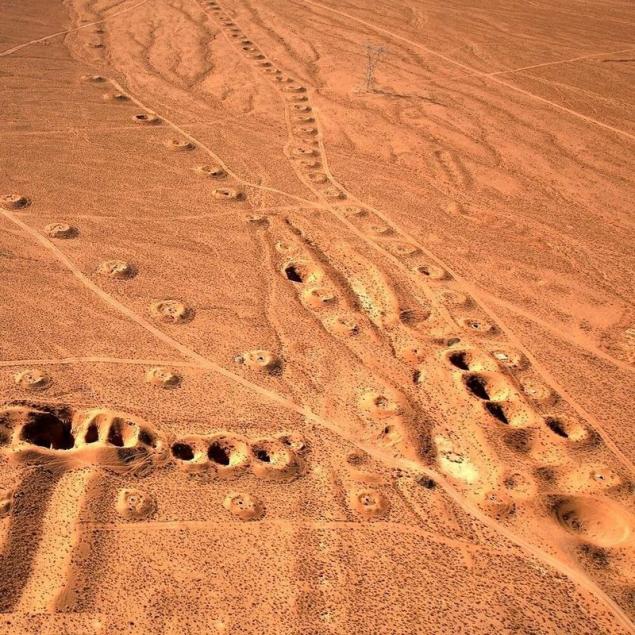
This method of obtaining water was borrowed by many other Nations and is found in Morocco, Algeria, Libya, and Afghanistan. The kiariz is also in Yalta, in the Crimea. It is known that long ago, it was built by Armenians.
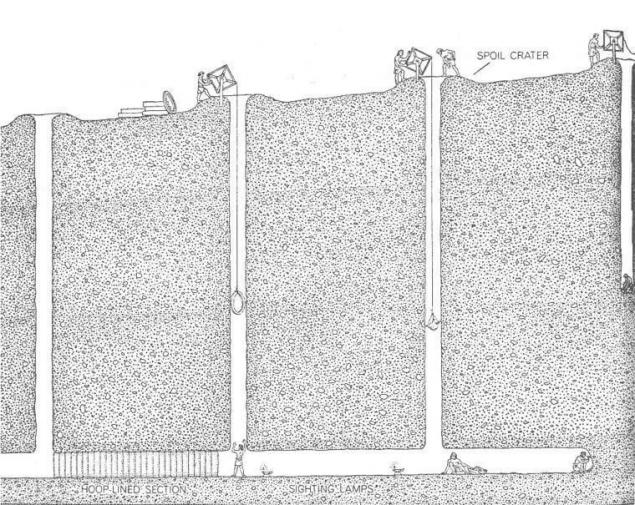
Eight thousand years ago in the Piedmont strip of the Kopet Dagh began to practice irrigated agriculture using water from the mountains flowing rivers and streams. Subsequently, the development of agriculture and sustainable growth calls for new water sources, which were kariz.
According to researchers, the first kariz in the southern Turkmenistan and Northern Iran emerged in the mid-I Millennium BC, Turkmen legends trace the construction of kariz, to the time of Alexander the great. The ancient historian Polybius reported kariz South of Parthia, noting that the one who will hold a "spring water in the area, until then Poroshenko.", the whole area is in use for a period of five generations. And this is no accident. The kiariz is a complex hydraulic structure, which is a system of wells connected by underground galleries. The construction of kariz, the depth of which reached several hundred meters, and the length of the galleries — kilometers, was extremely time consuming. Moreover, the wizard dug wells from the bottom up, which was very dangerous, because quite often there were cave-ins. The construction of one of kiariz stretched on for years, sometimes even decades, but learned from them the water irrigated dozens of hectares of fertile land.
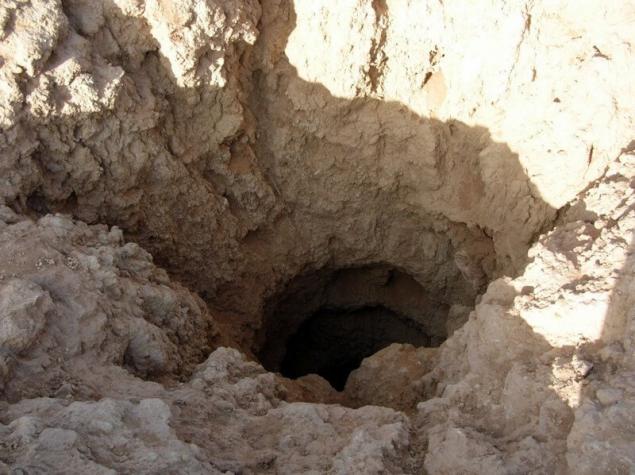
The main master karshen was under the leadership of 4-5 assistants. In the construction of wells and underground galleries used the simplest tools: a pickaxe, a small shovel, a protective Board, lamp, hat, leather bag, wooden gate, which was used for lowering and lifting of the masters, bags of land, tools, etc.
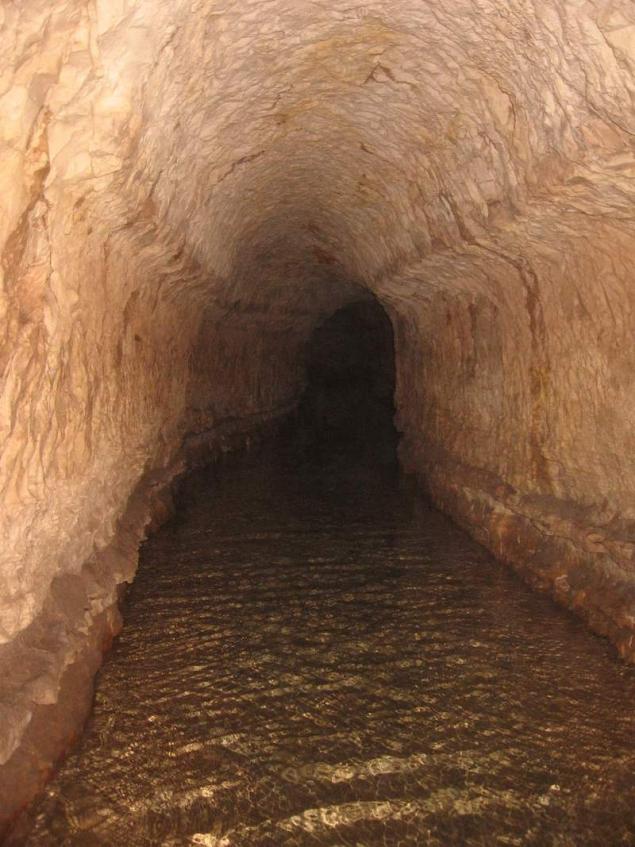
The depth of the well was determined by the main master with a simple level (rope with weighting). The diameter of the wells did not exceed 1 m, height of galleries typically ranged from 1 m 30 cm to 1 m 50 cm, width reached 80 cm With a lack of air at the well established a forge and using a reed tube filed the air in the gallery. The distance between the wells was about 20-30 meters, it was determined by the master. The construction of new irrigation tunnels, and the repair work required not only a large and prolonged labour, but the extraordinary skill and perseverance of the craftsmen karazhanov. Craftsmen and their assistants who had great strength. This can be seen in the size of stones, some of which had a size of 120 x 70 x 50 cm in order to raise and even more carefully lay a lump of masonry, which serves to strengthen the underground galleries need a crane. How it managed to do our distant ancestors is still a mystery.
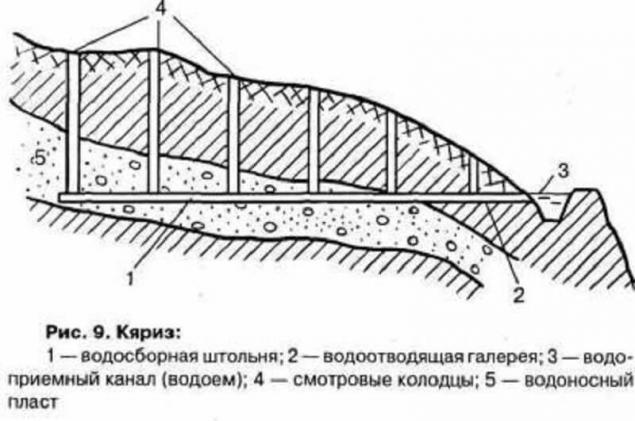
As noted by the hydrologist H. Kurtametov, the uniqueness of the method of groundwater extraction kariz systems lies in the fact that these structures extract water from great depths challenging the chain of underground galleries and vertical manholes, gravity bringing the water to the surface without using conventional energy sources.
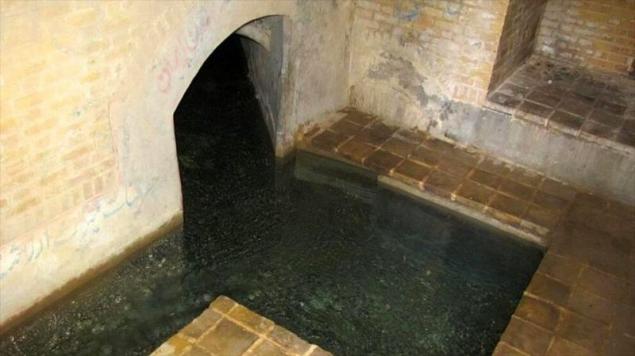
Indeed, in the foothills and desert areas kariz was in fact the only source of drinking water. Turkmens carefully concealed the wells felting, saving them from desert sediments and hiding from enemies. In the middle ages kyarizes in Turkmenistan were quite numerous. The Governor of Khorasan, Abdullah Ibn Tahir (830-840.) even instructed the scholars of religious law (faciam) to draw up special guide kariz. The author of XI century, Gardizi writes that compiled the book "Kitab al-Kuny" ("Book about the wells") continued to serve and in his time, ie, 200 years after it was written. Unfortunately, the book up to the present day is not reached.
Many of the kariz were in the regions of Turkmenistan, Altyn Asyr, AK Bugday, rajabasa, geoktepinskiy, Barlinka districts of our country. Large kyarizes acted in Baharly etrap, which supplied the population with water until recently. These include the kariz Baharly and Bruna, Murcia, Sunca, kalata.

As noted in "Overview of the TRANS-Caspian region from 1882 to 1890", in the early 1890 only Ashhabadka County, there were 17 kariz and 140 wells. Yes in Ashgabat until the 40-ies of XX century there were four major kyariz system. Interestingly, the engineer Tairov points out that in 1892 in Ashhabadka County, worked 42 kiariz. Most likely, part of the old irrigation tunnels have been cleared and restored. Powerful kyariz system existed on the site Akdepe in the town Bikrova (now Changability etrap of Ashgabat city). During the excavation of this monument, the author of these lines counted 38 littered with wells that ran in an arc from South-West to the South and further South to the modern autobahn. Apparently, wells was much more, and they stretched from the foothills to the ancient city.

Kyarizes affect its solidity and grandeur. For example, an underground gallery of kiariz Horse March has a height of 4 meters and a width of 2 meters! Torunskie same kyarizes affect its length. They had in ancient times a conduit of brick, which stretched for tens of kilometers from the foothills to the city Shahristan, located on the border with the desert.

Water kariz set in motion numerous mills and water-lifting devices (chigiri). One such Chigir is mentioned in the X century on the kiariz in Rabat Verava (Parau). According to the researchers, it is about kiariz Janahir in the southwest of the city of Serdar. According to al-Khwarizmi in the middle of the century in Khorasan there are different types of chigiri (dulab, Dahlia, Garraf, turnock, Naur, manganon) driven beasts of burden. Sources indicate that only on the Amu Darya in the 20-ies of XX century acted up to 15 thousand chigiri, which was watered by about thirty thousand acres of land.
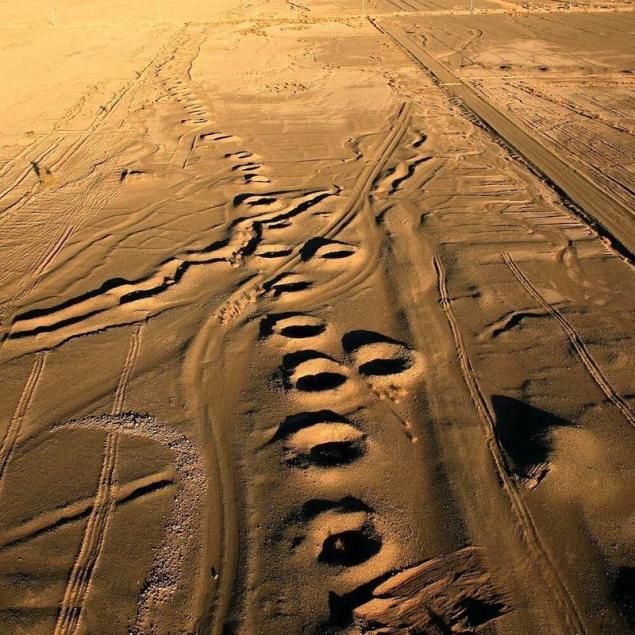
It is noteworthy that the Turkmens there was a cult Sahateni — the patron Saint of craftsmen well business, in whose honor sacrifices were held. After removing the top soil of the land of the wizard-Carshena people were summoned for sadaqah in honor Suhasini, so digging was not accompanied by misfortunes. From the search of favorable locations for the well and until the end of the master prayed Sagizanne to send him good luck. Work kyariz masters paid for each shareholder depending on their share of the daily requirement of water.
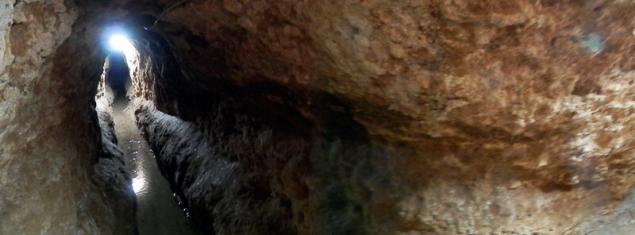
Interestingly, one kiariz could serve a large number of people. For example, more than 120 years ago Torunskie kariz Juntos and Aynabat supplied water, respectively, 95 and 143 homeowners and kiariz Horse Murch supplied water 53 of the homeowner. In some places people even remember the names of the masters kariz Affairs. So, kiariz Janabat was built over 160 years ago by Erythrom karshenas and his assistants.
Indeed, the original folk] perfected thousands of years. And now, when at the service of man delivered a powerful technique and modern technology, this invaluable past experience deserves attention and study.
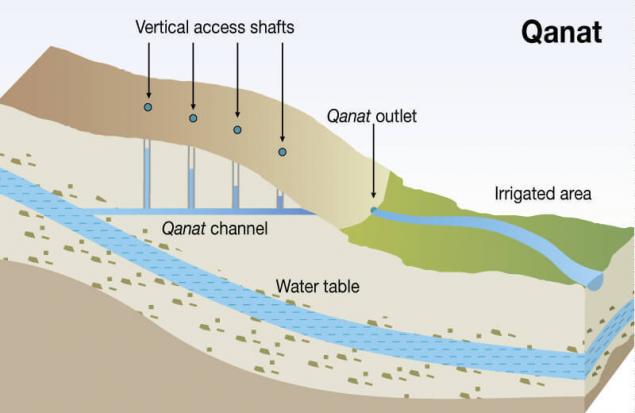
Here's what he wrote in the magazine "Around the world" in 1984 about Turkmen Karetnikov:
Korisnici follow the action of underground conduits, restoring the destroyed line. This work requires endurance, uncommon strength, skill. The master korisniku Durdy Hellavu over fifty. At first glance not to say that he is able for four or five hours to wield in tight gallery pick and a jackhammer. Lean, angular, fine lines run across his forehead and sunken cheeks. But hands — sinewy, gnarled, and blue eyes — clingy.
In kiariz Durdy got a boy. Heavy then it was time. With the first volleys of the war had emptied the village. The men went to defend the Homeland from the Nazis, their wives and sons remained to grow cotton. Then I liked the old master korisniku ATA nurmuhamedova nimble, sharp-eyed lad. At first Durdy together with women dragged from the mountains juniper to strengthen the walls of the wells, turning heavy and unwieldy gate-charkh. And then came the day when he first fell in kiariz.
Since then it's been more than forty years. Durdy became the father of ten children, he respectfully greeted the elders, and everyone in the neighborhood call it the USS Durdy.
Among artists, Karetnikov no equal Durdy Hellavu. Except for his legs he began to bring before the storm. But such is the fate not of one generation Karetnikov. After all, castles and summer under the earth have to work knee-deep or even waist-deep in water.
... Habitually resting the elbow, the wizard holding the lamp and easily, moves slowly through the dark corridor. I did not manage to turn around in the narrow passage — small, goose steps stepping back. Water legs, for noticeably enhanced. Perhaps this place was a collapse of the clay mineral narrowed passage. Finally I squeeze sideways between the concrete tiles-palan that secure the walls of the gallery.
Durdy encourages me:
A little more, now to the fork we reach there and take a rest.
Behind hear pokreativnee of Recep. It is not easy. Korisnikom he has become recently. Before that, however, also dealt with water — he worked on the farm waterer.
At the fork larger. You can straighten, take a breath. I scoop water, rinse the face. Durdy parked his lamp in a niche carved in the clay wall, and pulls out from under the hat, covering the bald head, cigarette. Lights from the lamp. Hear splashing water.
— Durdy, I said,— probably, all happened under the earth?
— Was, was, was a lot— nods head master.— I'll tell you later. Upstairs...
Lighting here will leave or with a pick? — asks the Recep.
— YAKSHI, YAKSHI— meets Durdy. Clear — don't kariz here tomorrow again to go down.
Come to the well. "Go,"— tapping me on the shoulder Durdy and nods to a rope hanging over the water. I put on her ball and rags, and sit back to "ass", as jokingly called korisnici this simple device. The rope is tightened, and my feet lift off the water.
Slowly floating up. Try to stay freer and straighter the shaft of the well is narrow, and the walls strengthened with branches of juniper, some nails sticking out. Closer sun the eye of kiariz which from below seemed the size of a nickle.
Finally I'm upstairs. Put her hands on the neck of the well, trying to get rid of the loop, but I was immediately picks up armpit, literally pulls out of Dikan Brigadier I ZIM Shamuhamedov. In a few minutes near me falls on the burnt grass redzheb, and soon appears over the well head Durdy. Teeth tightly clamped mouthpiece with a Smoking cigarette...
Korisnici steel folding tool. Above the valley — the lingering midday heat. It's only the end of April, but already wilted, faded grass, crumbled, blackened poppies. High mountain Tagarev covered in a dusty haze. Over wrinkled brown foothills of the soaring eagles lazily.
— Now you can remember— stretches the word Durdy and lands on the grass.— In the fifties, Yes, exactly two years after the Ashgabat earthquake, we cleared a blockage in the kiariz. The usual thing — pick tuki and Tukey. Suddenly the water is going to pour! I was knocked down, dragged. To ceiling filled the gallery. Then don't remember anything... I Woke up in the side of the pit, barely think. Saved by the fact that the water immediately subsided...
— Do you remember how after a heavy rain debris flow broke into the gallery? — frowns Asim. He's a young Brigadier, and he wants to look to the masters of a solid and experienced. Aim and then corrects dashing military black hat, holding important.
— Yes, it was, ' replied Durdy.— Day and night they dug then the new kariz line to get to the old road.
— By the way— the foreman lifts a finger,— we have every kiariz has its own name. We were now in Bukiri-kiariz. And then there are Keleta-kiariz, Toukley-kiariz, Dali-kiariz, Khan kiariz. Usually the line is named after the master who built or restored them.
Perhaps not everyone can become korisnikom? — I ask the foreman.
— Come, let's go. And so it happens. He saw what work. But I don't want to say about it.— Asim gently touched my shoulder.— There, you see a boy in jeans, which pulls the gate? This is my brother, Habib. Son Durdy is also in our team works. Now you decide who and how becomes korisnikom.
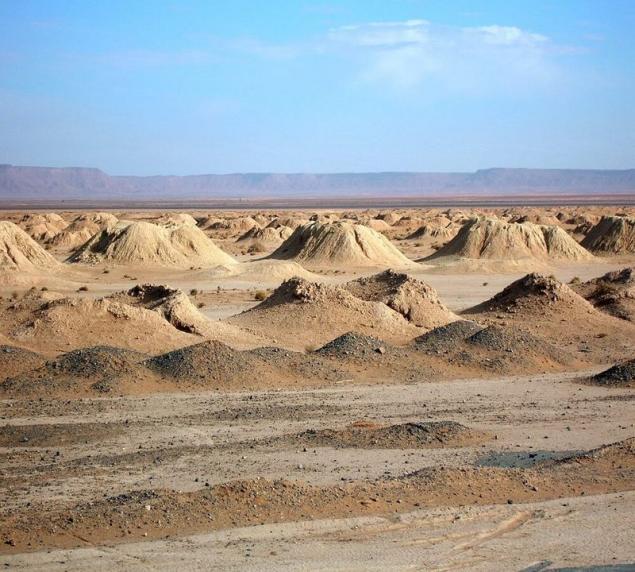
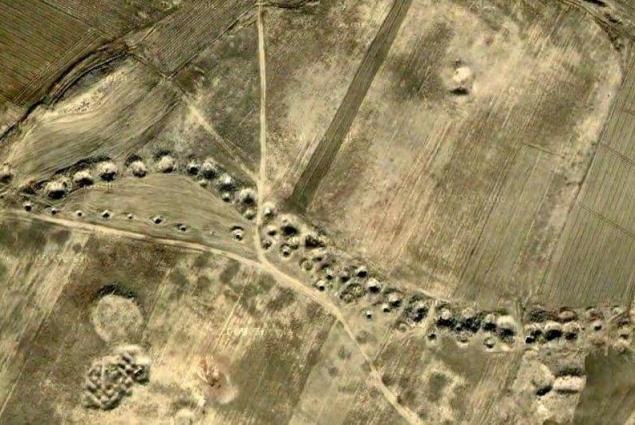
Also interesting: Ten incredible ancient technologies that are considered advanced even today
Amazing ancient "genetic disc"
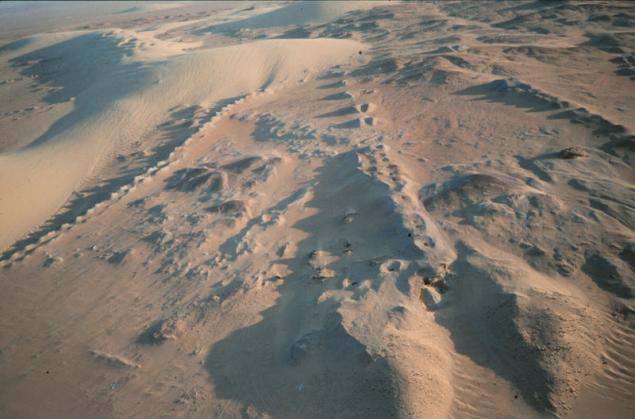
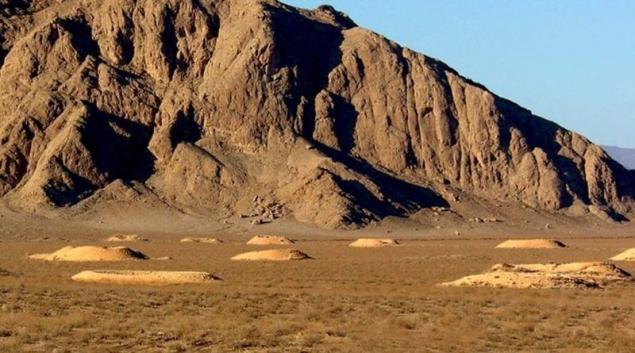
It should be noted that Generalskaya system is still in effect, though, was built 2700 years ago. Today it provides water to approximately 40,000 people, and this is a very impressive figure.published
Author: MASTEROK
Source: masterok.livejournal.com/3134131.html
Look at those weird holes in the ground — what is it? Let's start with the fact that this building is almost 3,000 years and it was built before the war between the Persians and the Greeks, three hundred years of commercials before...

The building is called the kiariz, or minutes away from, and it is located in the city of Gonabad that in modern Iran.

The kiariz is considered one of the greatest inventions of the time! This tap system is able to collect water out of the aquifers and transport it to cities and irrigation canals. Due to this, Persia was able to exist and thrive in the arid climate.

Hydraulic system includes the main pit, which receives water from the underground horizon, a system of tunnels in which water is transported to a certain place, and vertical wells for ventilation along the entire route, thereby condensing moisture. Everything else, underground conduit significantly reduces the evaporation of precious moisture.

Length generalscope of kiariz is 33,113 meters, it contains 427 recesses for water. Structures are built using the knowledge of the laws of physics, Geology and hydraulics, which confirms the high degree of development of the Persians. Since 2007 gonabadi the kiariz included in the world heritage List of UNESCO.

This method of obtaining water was borrowed by many other Nations and is found in Morocco, Algeria, Libya, and Afghanistan. The kiariz is also in Yalta, in the Crimea. It is known that long ago, it was built by Armenians.

Eight thousand years ago in the Piedmont strip of the Kopet Dagh began to practice irrigated agriculture using water from the mountains flowing rivers and streams. Subsequently, the development of agriculture and sustainable growth calls for new water sources, which were kariz.
According to researchers, the first kariz in the southern Turkmenistan and Northern Iran emerged in the mid-I Millennium BC, Turkmen legends trace the construction of kariz, to the time of Alexander the great. The ancient historian Polybius reported kariz South of Parthia, noting that the one who will hold a "spring water in the area, until then Poroshenko.", the whole area is in use for a period of five generations. And this is no accident. The kiariz is a complex hydraulic structure, which is a system of wells connected by underground galleries. The construction of kariz, the depth of which reached several hundred meters, and the length of the galleries — kilometers, was extremely time consuming. Moreover, the wizard dug wells from the bottom up, which was very dangerous, because quite often there were cave-ins. The construction of one of kiariz stretched on for years, sometimes even decades, but learned from them the water irrigated dozens of hectares of fertile land.

The main master karshen was under the leadership of 4-5 assistants. In the construction of wells and underground galleries used the simplest tools: a pickaxe, a small shovel, a protective Board, lamp, hat, leather bag, wooden gate, which was used for lowering and lifting of the masters, bags of land, tools, etc.

The depth of the well was determined by the main master with a simple level (rope with weighting). The diameter of the wells did not exceed 1 m, height of galleries typically ranged from 1 m 30 cm to 1 m 50 cm, width reached 80 cm With a lack of air at the well established a forge and using a reed tube filed the air in the gallery. The distance between the wells was about 20-30 meters, it was determined by the master. The construction of new irrigation tunnels, and the repair work required not only a large and prolonged labour, but the extraordinary skill and perseverance of the craftsmen karazhanov. Craftsmen and their assistants who had great strength. This can be seen in the size of stones, some of which had a size of 120 x 70 x 50 cm in order to raise and even more carefully lay a lump of masonry, which serves to strengthen the underground galleries need a crane. How it managed to do our distant ancestors is still a mystery.

As noted by the hydrologist H. Kurtametov, the uniqueness of the method of groundwater extraction kariz systems lies in the fact that these structures extract water from great depths challenging the chain of underground galleries and vertical manholes, gravity bringing the water to the surface without using conventional energy sources.

Indeed, in the foothills and desert areas kariz was in fact the only source of drinking water. Turkmens carefully concealed the wells felting, saving them from desert sediments and hiding from enemies. In the middle ages kyarizes in Turkmenistan were quite numerous. The Governor of Khorasan, Abdullah Ibn Tahir (830-840.) even instructed the scholars of religious law (faciam) to draw up special guide kariz. The author of XI century, Gardizi writes that compiled the book "Kitab al-Kuny" ("Book about the wells") continued to serve and in his time, ie, 200 years after it was written. Unfortunately, the book up to the present day is not reached.
Many of the kariz were in the regions of Turkmenistan, Altyn Asyr, AK Bugday, rajabasa, geoktepinskiy, Barlinka districts of our country. Large kyarizes acted in Baharly etrap, which supplied the population with water until recently. These include the kariz Baharly and Bruna, Murcia, Sunca, kalata.

As noted in "Overview of the TRANS-Caspian region from 1882 to 1890", in the early 1890 only Ashhabadka County, there were 17 kariz and 140 wells. Yes in Ashgabat until the 40-ies of XX century there were four major kyariz system. Interestingly, the engineer Tairov points out that in 1892 in Ashhabadka County, worked 42 kiariz. Most likely, part of the old irrigation tunnels have been cleared and restored. Powerful kyariz system existed on the site Akdepe in the town Bikrova (now Changability etrap of Ashgabat city). During the excavation of this monument, the author of these lines counted 38 littered with wells that ran in an arc from South-West to the South and further South to the modern autobahn. Apparently, wells was much more, and they stretched from the foothills to the ancient city.

Kyarizes affect its solidity and grandeur. For example, an underground gallery of kiariz Horse March has a height of 4 meters and a width of 2 meters! Torunskie same kyarizes affect its length. They had in ancient times a conduit of brick, which stretched for tens of kilometers from the foothills to the city Shahristan, located on the border with the desert.

Water kariz set in motion numerous mills and water-lifting devices (chigiri). One such Chigir is mentioned in the X century on the kiariz in Rabat Verava (Parau). According to the researchers, it is about kiariz Janahir in the southwest of the city of Serdar. According to al-Khwarizmi in the middle of the century in Khorasan there are different types of chigiri (dulab, Dahlia, Garraf, turnock, Naur, manganon) driven beasts of burden. Sources indicate that only on the Amu Darya in the 20-ies of XX century acted up to 15 thousand chigiri, which was watered by about thirty thousand acres of land.

It is noteworthy that the Turkmens there was a cult Sahateni — the patron Saint of craftsmen well business, in whose honor sacrifices were held. After removing the top soil of the land of the wizard-Carshena people were summoned for sadaqah in honor Suhasini, so digging was not accompanied by misfortunes. From the search of favorable locations for the well and until the end of the master prayed Sagizanne to send him good luck. Work kyariz masters paid for each shareholder depending on their share of the daily requirement of water.

Interestingly, one kiariz could serve a large number of people. For example, more than 120 years ago Torunskie kariz Juntos and Aynabat supplied water, respectively, 95 and 143 homeowners and kiariz Horse Murch supplied water 53 of the homeowner. In some places people even remember the names of the masters kariz Affairs. So, kiariz Janabat was built over 160 years ago by Erythrom karshenas and his assistants.
Indeed, the original folk] perfected thousands of years. And now, when at the service of man delivered a powerful technique and modern technology, this invaluable past experience deserves attention and study.

Here's what he wrote in the magazine "Around the world" in 1984 about Turkmen Karetnikov:
Korisnici follow the action of underground conduits, restoring the destroyed line. This work requires endurance, uncommon strength, skill. The master korisniku Durdy Hellavu over fifty. At first glance not to say that he is able for four or five hours to wield in tight gallery pick and a jackhammer. Lean, angular, fine lines run across his forehead and sunken cheeks. But hands — sinewy, gnarled, and blue eyes — clingy.
In kiariz Durdy got a boy. Heavy then it was time. With the first volleys of the war had emptied the village. The men went to defend the Homeland from the Nazis, their wives and sons remained to grow cotton. Then I liked the old master korisniku ATA nurmuhamedova nimble, sharp-eyed lad. At first Durdy together with women dragged from the mountains juniper to strengthen the walls of the wells, turning heavy and unwieldy gate-charkh. And then came the day when he first fell in kiariz.
Since then it's been more than forty years. Durdy became the father of ten children, he respectfully greeted the elders, and everyone in the neighborhood call it the USS Durdy.
Among artists, Karetnikov no equal Durdy Hellavu. Except for his legs he began to bring before the storm. But such is the fate not of one generation Karetnikov. After all, castles and summer under the earth have to work knee-deep or even waist-deep in water.
... Habitually resting the elbow, the wizard holding the lamp and easily, moves slowly through the dark corridor. I did not manage to turn around in the narrow passage — small, goose steps stepping back. Water legs, for noticeably enhanced. Perhaps this place was a collapse of the clay mineral narrowed passage. Finally I squeeze sideways between the concrete tiles-palan that secure the walls of the gallery.
Durdy encourages me:
A little more, now to the fork we reach there and take a rest.
Behind hear pokreativnee of Recep. It is not easy. Korisnikom he has become recently. Before that, however, also dealt with water — he worked on the farm waterer.
At the fork larger. You can straighten, take a breath. I scoop water, rinse the face. Durdy parked his lamp in a niche carved in the clay wall, and pulls out from under the hat, covering the bald head, cigarette. Lights from the lamp. Hear splashing water.
— Durdy, I said,— probably, all happened under the earth?
— Was, was, was a lot— nods head master.— I'll tell you later. Upstairs...
Lighting here will leave or with a pick? — asks the Recep.
— YAKSHI, YAKSHI— meets Durdy. Clear — don't kariz here tomorrow again to go down.
Come to the well. "Go,"— tapping me on the shoulder Durdy and nods to a rope hanging over the water. I put on her ball and rags, and sit back to "ass", as jokingly called korisnici this simple device. The rope is tightened, and my feet lift off the water.
Slowly floating up. Try to stay freer and straighter the shaft of the well is narrow, and the walls strengthened with branches of juniper, some nails sticking out. Closer sun the eye of kiariz which from below seemed the size of a nickle.
Finally I'm upstairs. Put her hands on the neck of the well, trying to get rid of the loop, but I was immediately picks up armpit, literally pulls out of Dikan Brigadier I ZIM Shamuhamedov. In a few minutes near me falls on the burnt grass redzheb, and soon appears over the well head Durdy. Teeth tightly clamped mouthpiece with a Smoking cigarette...
Korisnici steel folding tool. Above the valley — the lingering midday heat. It's only the end of April, but already wilted, faded grass, crumbled, blackened poppies. High mountain Tagarev covered in a dusty haze. Over wrinkled brown foothills of the soaring eagles lazily.
— Now you can remember— stretches the word Durdy and lands on the grass.— In the fifties, Yes, exactly two years after the Ashgabat earthquake, we cleared a blockage in the kiariz. The usual thing — pick tuki and Tukey. Suddenly the water is going to pour! I was knocked down, dragged. To ceiling filled the gallery. Then don't remember anything... I Woke up in the side of the pit, barely think. Saved by the fact that the water immediately subsided...
— Do you remember how after a heavy rain debris flow broke into the gallery? — frowns Asim. He's a young Brigadier, and he wants to look to the masters of a solid and experienced. Aim and then corrects dashing military black hat, holding important.
— Yes, it was, ' replied Durdy.— Day and night they dug then the new kariz line to get to the old road.
— By the way— the foreman lifts a finger,— we have every kiariz has its own name. We were now in Bukiri-kiariz. And then there are Keleta-kiariz, Toukley-kiariz, Dali-kiariz, Khan kiariz. Usually the line is named after the master who built or restored them.
Perhaps not everyone can become korisnikom? — I ask the foreman.
— Come, let's go. And so it happens. He saw what work. But I don't want to say about it.— Asim gently touched my shoulder.— There, you see a boy in jeans, which pulls the gate? This is my brother, Habib. Son Durdy is also in our team works. Now you decide who and how becomes korisnikom.


Also interesting: Ten incredible ancient technologies that are considered advanced even today
Amazing ancient "genetic disc"


It should be noted that Generalskaya system is still in effect, though, was built 2700 years ago. Today it provides water to approximately 40,000 people, and this is a very impressive figure.published
Author: MASTEROK
Source: masterok.livejournal.com/3134131.html

